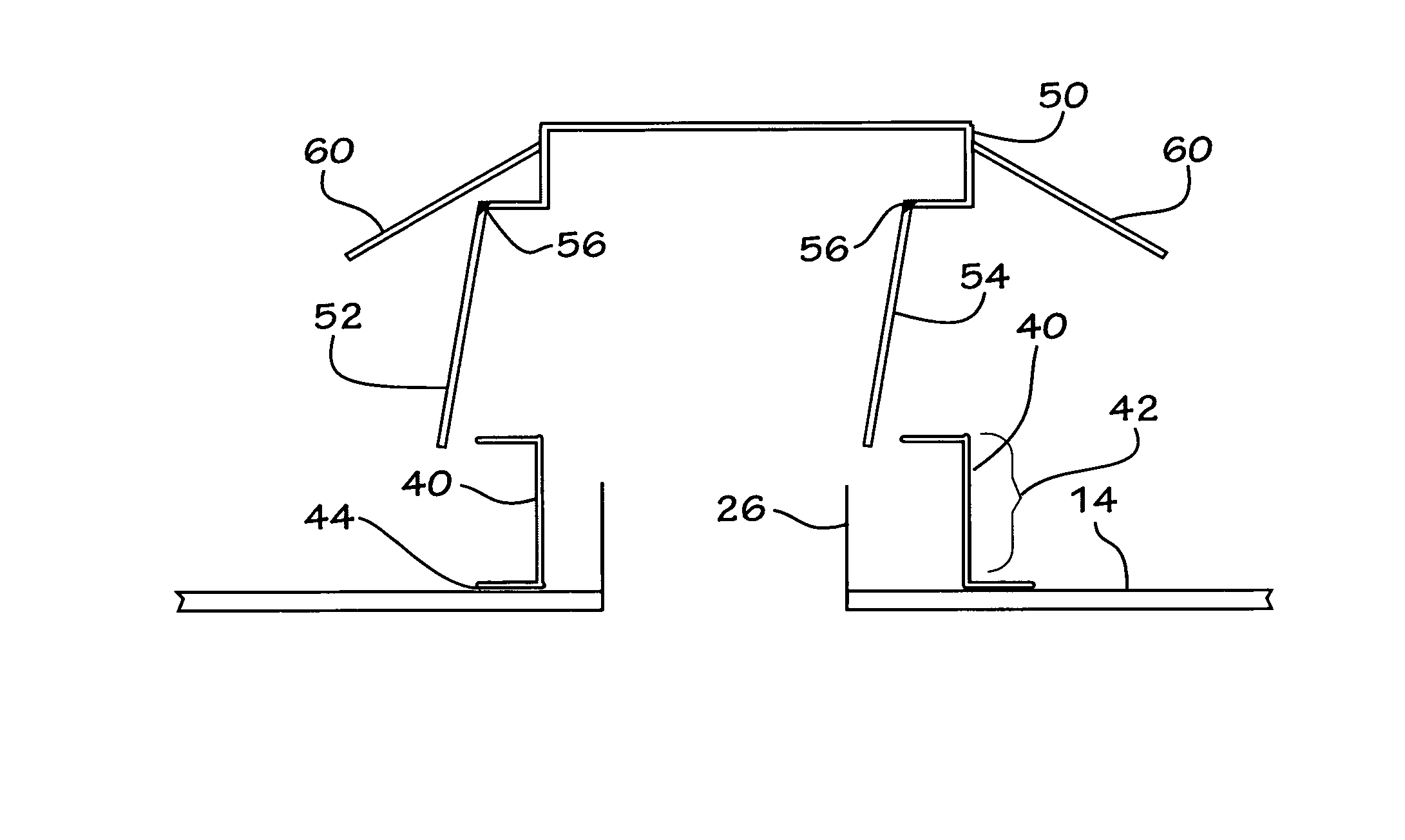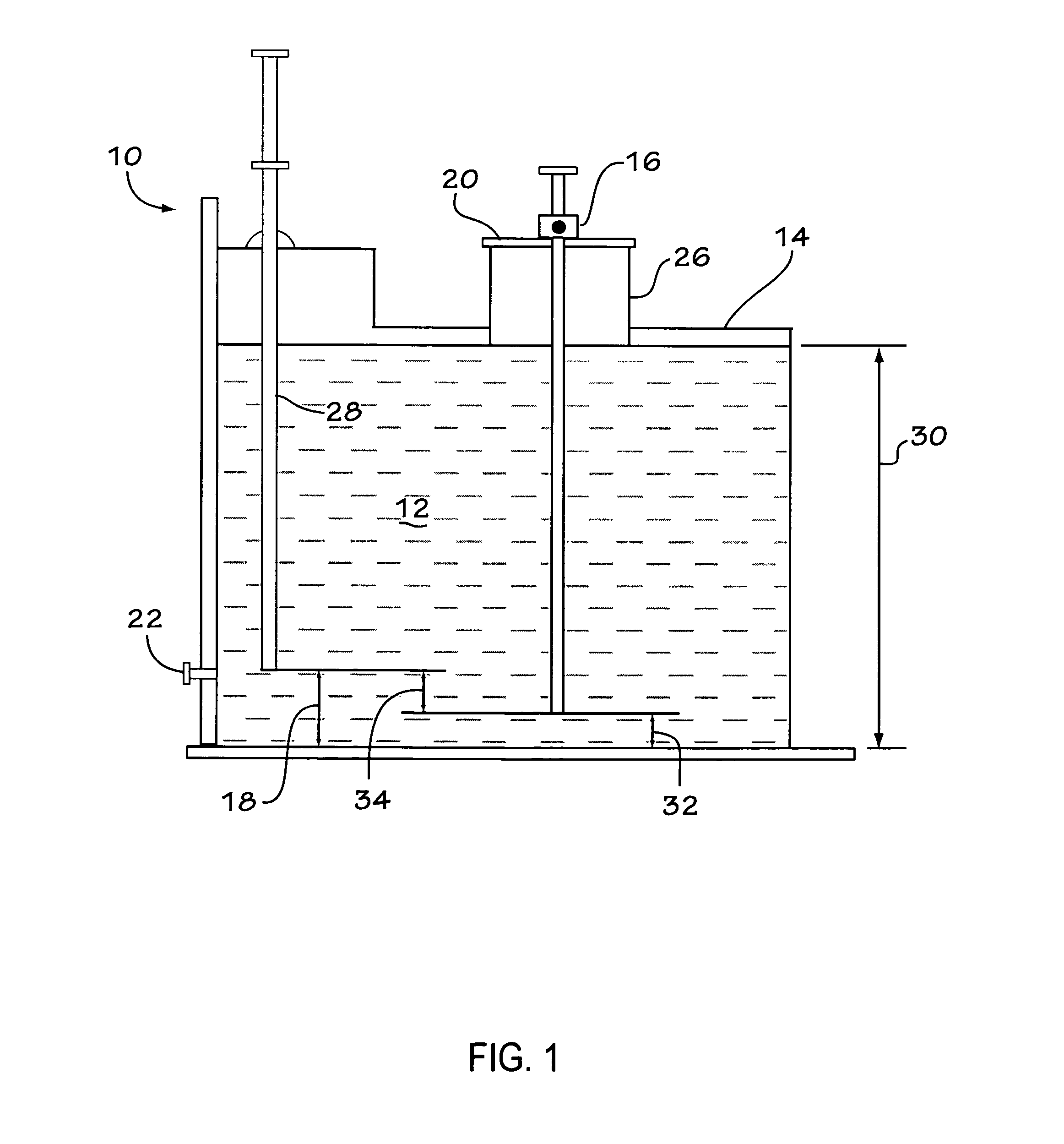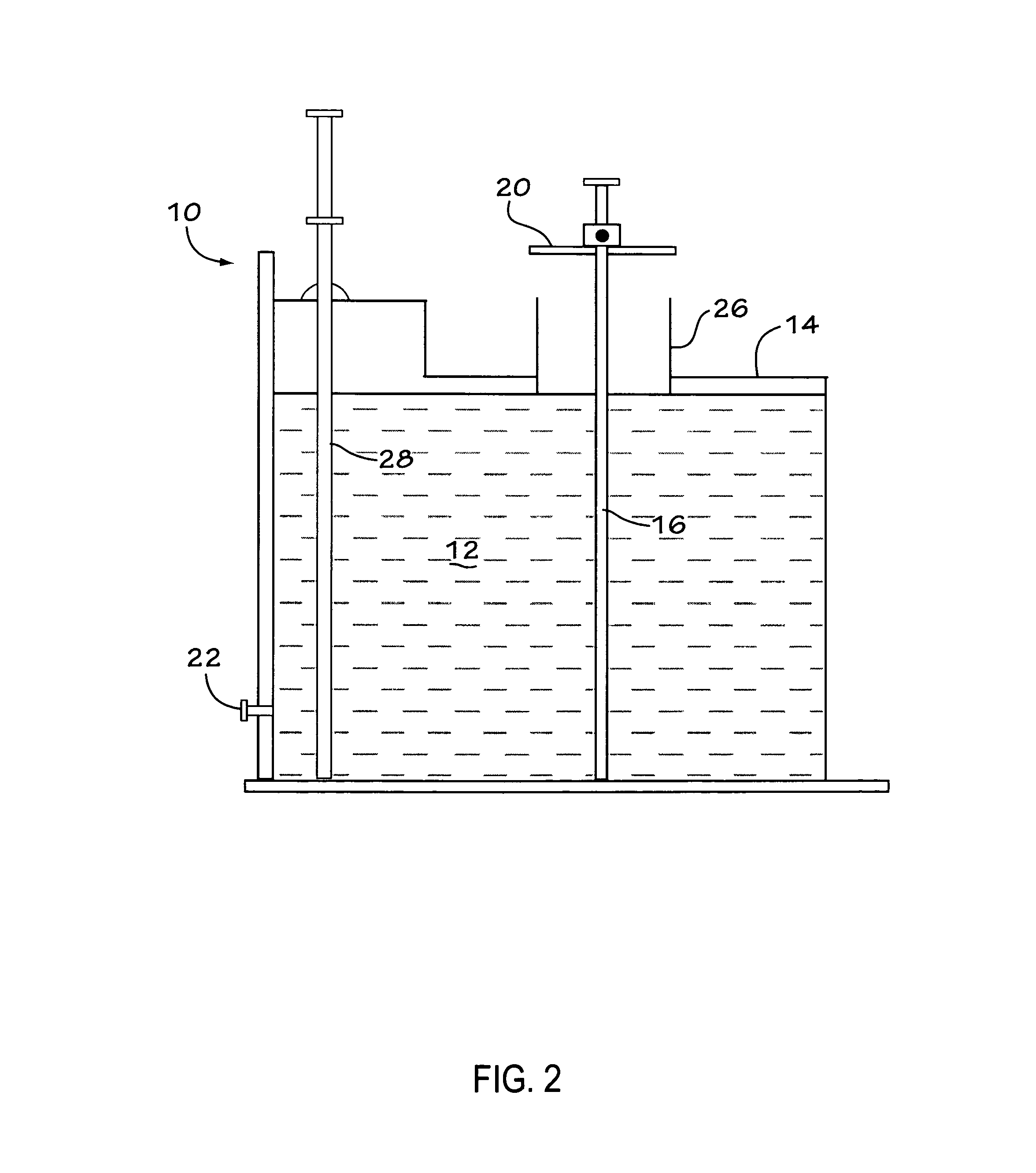Retrofit for floating roof tanks
a technology for floating roof tanks and vacuum vents, which is applied in the direction of packaging, closures, large containers, etc., can solve the problems of extra inventory held in tank bottoms that cost money, and achieve the effect of reducing inventory heel
- Summary
- Abstract
- Description
- Claims
- Application Information
AI Technical Summary
Benefits of technology
Problems solved by technology
Method used
Image
Examples
Embodiment Construction
[0013]In the preferred embodiment, the leg-less vent further comprises a frame supporting a pressure door and a vacuum door. A hinge connects the pressure door to the frame and a hinge connects the vacuum door to the frame. The hinges on the vent doors are fabric hinges.
[0014]In a preferred embodiment, the method further comprises the step of: lowering the inventory heel of the volatile product stored in the storage tank.
[0015]The method further comprising the step of: providing necessary pressure or vacuum management to the storage tank.
[0016]FIG. 1 is a view showing a typical prior art floating roof tank including a conventional leg-actuated pressure-vacuum vent. FIG. 1 shows the roof floating. FIG. 1 shows a floating roof storage tank 10 that holds a quantity of volatile product 12 therein. There is a floating roof 14 which rests on the product 12 and which is in contact with the product 12. Leg-actuated pressure-vacuum-vent 16 extends through roof 14 and floats on product 12. Th...
PUM
 Login to View More
Login to View More Abstract
Description
Claims
Application Information
 Login to View More
Login to View More - R&D
- Intellectual Property
- Life Sciences
- Materials
- Tech Scout
- Unparalleled Data Quality
- Higher Quality Content
- 60% Fewer Hallucinations
Browse by: Latest US Patents, China's latest patents, Technical Efficacy Thesaurus, Application Domain, Technology Topic, Popular Technical Reports.
© 2025 PatSnap. All rights reserved.Legal|Privacy policy|Modern Slavery Act Transparency Statement|Sitemap|About US| Contact US: help@patsnap.com



